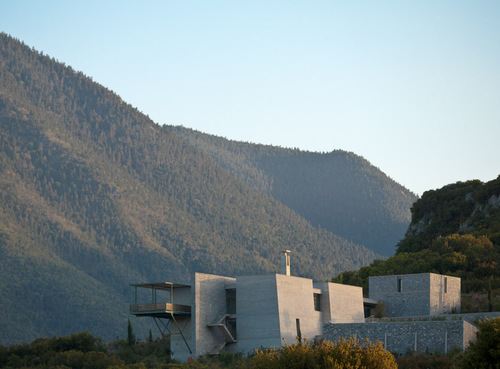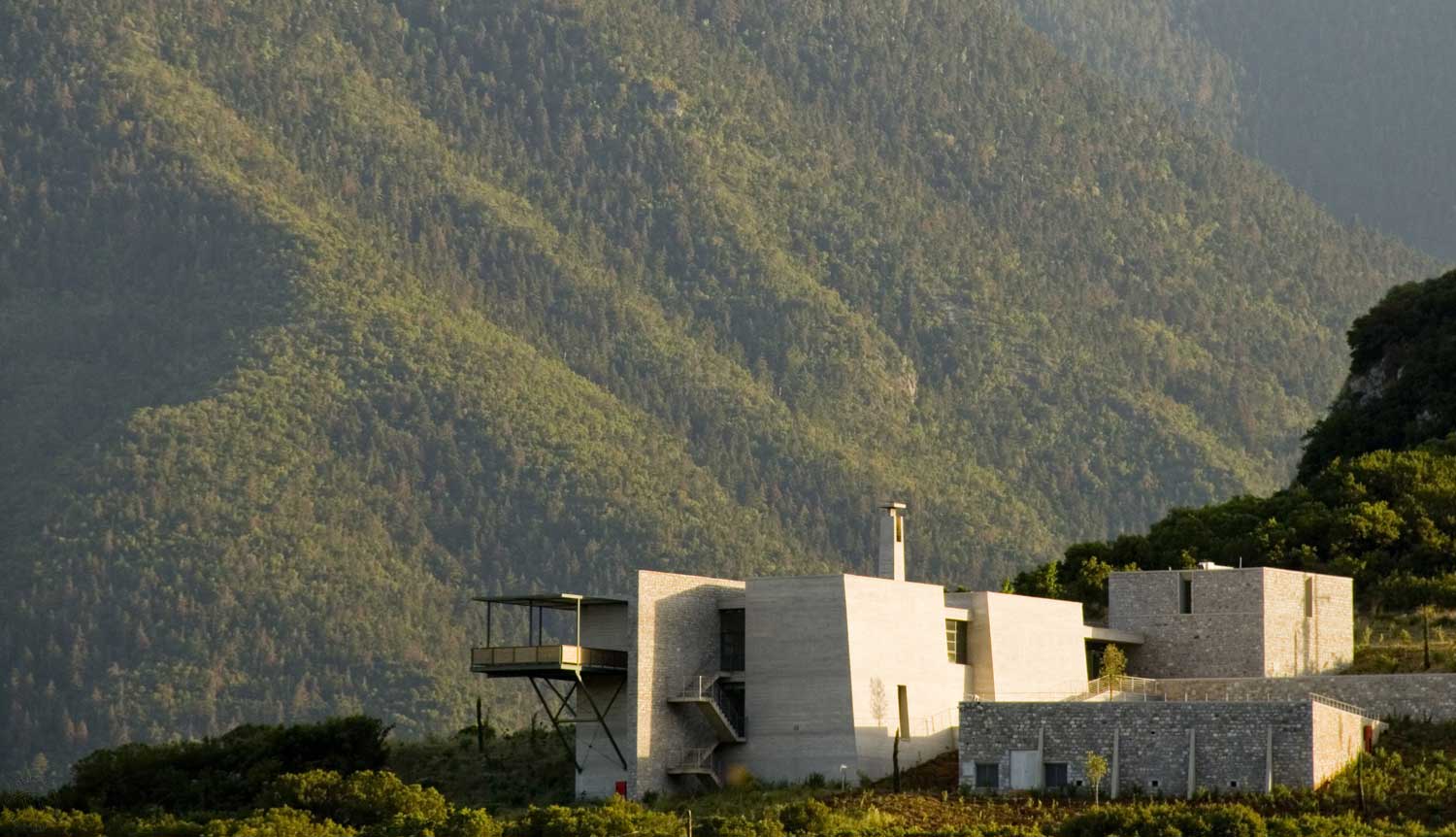One of the most mythic places in the Peloponnese is Stymphalia, in the marshes of which once lived the man-eating Stymphalian Birds with beaks of bronze and metal feathers. Heracles vanquished the vicious birds with poison arrows made by Hephaestus and given to him by the goddess Athena.

The Museum





The Environment Museum of Stymphalia is located in the mountainous area of the prefecture of Corinth, there where, according to mythology, Hercules confronted and slew the Stymphalian birds. Situated in the northeastern Peloponnese at an altitude of 600m, the plateau of Stymphalia is surrounded by the mountains of Zireia, Oligyrtos, Mavrovounio and Gravias, on the southern side of the prefecture of Corinth. The water basin of Stymphalia is considered to be the largest mountain lake of the Peloponnese, at the same time as being the Balkans' southernmost mountain wetland. Its main interest resides in the lake's rich organic world, as well as in the underground and visible ways along which the water circulates. The region's ecological value, centred on the lake and its rich forests, is confirmed by its inclusion in the European Network of Protected Areas NATURA 2000.
 The aim of the Environment Museum of Stymphalia is to show the interdependence of humankind and Nature and their harmonious coexistence in the Stymphalia basin. The basic goals of the museological approach are to raise the public's ecological awareness and preserve the knowledge relating to the region's traditional technology. This objective is reflected museologically by the exhibition's development in two exhibition units: the first concerns the environment in this region, while the second marks the manner in which the environment influenced the development of human activity and in particular that of traditional occupations.
The aim of the Environment Museum of Stymphalia is to show the interdependence of humankind and Nature and their harmonious coexistence in the Stymphalia basin. The basic goals of the museological approach are to raise the public's ecological awareness and preserve the knowledge relating to the region's traditional technology. This objective is reflected museologically by the exhibition's development in two exhibition units: the first concerns the environment in this region, while the second marks the manner in which the environment influenced the development of human activity and in particular that of traditional occupations.

Various means of expression and audiovisual media are used to ensure a better understanding of the exhibition's content. Pictorial presentations refer to the objects' use and are accompanied by corresponding audiovisual material of an educational nature. The exhibition's goals are supported by models and interactive applications, digital representations and documentary films. Also, for the first time in Greece, an accessible cross-section of the lake in the Museum's interior offers the visitor the possibility of observing, first hand, some of the region's plants and fish.
 The Environment Museum of Stymphalia also comprises a cafeteria and a gift shop, while its multipurpose hall offers the possibility of developing cultural actions in the provinces, namely by hosting temporary exhibitions and organizing cultural events.
The Environment Museum of Stymphalia also comprises a cafeteria and a gift shop, while its multipurpose hall offers the possibility of developing cultural actions in the provinces, namely by hosting temporary exhibitions and organizing cultural events.
A walk around the lake is not just about paying homage to the mythical Heracles, but also to acquaint oneself with a rare and important ecosystem. The Stymphalia Wetland is host to more that 130 species of birds – among others the little bittern, purple heron, honey buzzard, Western marsh harrier, rock partridge, glossy ibis, gull-billed tern, black-crowned night heron and hen harrier.
The landscapes all round are impressive, as the lake is surrounded by four large hills: Zireia, Oligyrto, Mavrovouni and Gavrias. There are various paths around the legendary lake to take you on a discovery of the area, but the one that begins just past the village of Kioni passes by the acropolis of Ancient Stymphalos and the ancient theatre.
You can also engage in an activity that will make you feel as though you were a part of the mythological scene of Heracles’ battle with the Stymphalian Birds: Archery by the lake! Of course you will be using special targets (provided by a sports organiser in the area) rather than the poor birds that live here – they are nothing like the terrible monsters of myth.
End your tour with a visit to the very well put together Environment Museum of Stymphalia, where displays and guided tours highlight the significance of the wetland. You will learn all about the flora and fauna that thrives in the area, its history, its agricultural profile and the human activity that takes place here, and much, much more. The myth of Heracles’ fifth labour is still very much alive in Stymphalia.
GETTING THERE
To reach the Stymphalia wetland, drive from Corinth through Nemea. It is 62 km from Corinth.
SLEEPING & EATING
You will find plenty of guest houses and rooms-to-let in the mountain villages of Feneos, Goura, and Ano, Kato and Mesa Trikala. All of these villages have many traditional tavernas and grill house. You will also find good food at the tavernas near Stymphalia, Kallianous and Karteri.
The landscapes all round are impressive, as the lake is surrounded by four large hills: Zireia, Oligyrto, Mavrovouni and Gavrias. There are various paths around the legendary lake to take you on a discovery of the area, but the one that begins just past the village of Kioni passes by the acropolis of Ancient Stymphalos and the ancient theatre.
You can also engage in an activity that will make you feel as though you were a part of the mythological scene of Heracles’ battle with the Stymphalian Birds: Archery by the lake! Of course you will be using special targets (provided by a sports organiser in the area) rather than the poor birds that live here – they are nothing like the terrible monsters of myth.
End your tour with a visit to the very well put together Environment Museum of Stymphalia, where displays and guided tours highlight the significance of the wetland. You will learn all about the flora and fauna that thrives in the area, its history, its agricultural profile and the human activity that takes place here, and much, much more. The myth of Heracles’ fifth labour is still very much alive in Stymphalia.
GETTING THERE
To reach the Stymphalia wetland, drive from Corinth through Nemea. It is 62 km from Corinth.
SLEEPING & EATING
You will find plenty of guest houses and rooms-to-let in the mountain villages of Feneos, Goura, and Ano, Kato and Mesa Trikala. All of these villages have many traditional tavernas and grill house. You will also find good food at the tavernas near Stymphalia, Kallianous and Karteri.

Visit







Various means of expression and audiovisual media are used to ensure a better understanding of the exhibition's content. Pictorial presentations refer to the objects' use and are accompanied by corresponding audiovisual material of an educational nature. The exhibition's goals are supported by models and interactive applications, digital representations and documentary films. Also, for the first time in Greece, an accessible cross-section of the lake in the Museum's interior offers the visitor the possibility of observing, first hand, some of the region's plants and fish.



Δεν υπάρχουν σχόλια:
Δημοσίευση σχολίου